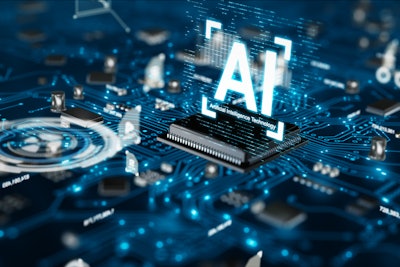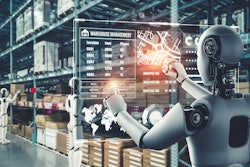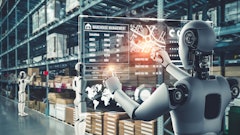
In today’s volatile and hyper-connected global markets, supply chains are under more scrutiny—and more pressure—than ever before. For years, leaders have optimized for speed, cost, and resilience. But there’s a fourth dimension rising rapidly in importance: customer experience (CX)
CX is no longer just the domain of commercial teams—it’s becoming a boardroom metric, influencing loyalty, reputation, and revenue. Yet many supply chain strategies still stop at service levels and lead times.
Explore how operational excellence must now converge with experience excellence through the lens of predictive intelligence, modular technology, and responsible artificial intelligence (AI). The real opportunity isn’t just in fixing problems faster—it’s in designing systems that prevent them altogether, and in doing so, create value where none existed before.
To meet this rising bar, supply chains must evolve—augmenting traditional operational strength with intelligent software, AI-powered forecasting, and data transparency. The result is a redefinition of performance: not just lean, but learning; not just agile, but anticipatory. Technology is not merely the engine—it’s becoming the intelligence layer of modern supply chains.
The shift from operational to experiential metrics
Traditionally, supply chain performance was measured through internal KPIs: on-time-in-full (OTIF), inventory turns and fulfillment rates. Today, organizations are expanding this lens to include experience-focused indicators like Net Satisfaction Score (NSS) and adherence to customer promise at the event level.
Why this shift? Because customer perception is shaped by exceptions, not averages. A 98% on-time rate may still fall short if a single delayed shipment derails a major infrastructure project. Experience metrics help supply chains close this gap by integrating customer perception directly into operational dashboards.
Predictive intelligence: From reaction to anticipation
Artificial intelligence and predictive analytics are allowing supply chains to anticipate and resolve issues before they impact the customer. Unlike traditional forecasting, modern predictive systems ingest live inputs—from supplier performance to weather risks and geopolitical disruptions—and overlay them with historical patterns and sentiment data.
Consider this: a predictive engine may flag a regional risk to lead-time accuracy due to component shortages. It can then automatically trigger available-to-promise revalidation, highlight at-risk orders, and propose mitigation plans—often before the customer even notices.
This level of foresight elevates more than operations; it enhances confidence and builds lasting trust.
Visibility as a trust foundation
Visibility is the foundation on which customer trust is built. Customers don’t just want shipment tracking—they want answers. Why was there a delay? When will it really arrive? What sustainability certifications does this product carry? What documentation is required for smooth installation?
Meeting these expectations requires more than portal access. It demands integrated traceability, digital documentation, and contextual self-service.
Enhanced product QR codes provide real-time access to categorized documentation, support contacts, and asset registration options. These upgrades allow customers to retrieve exactly what they need—without raising a ticket. While internal analytics are ongoing, early observations indicate a tangible drop in documentation-related support inquiries and a rise in first-time-right user engagement.
It’s a simple but powerful example of how visibility translates into smoother experience and stronger relationships.
Modular, scalable tech stacks: Building for today and tomorrow
Supply chains today operate as multi-layered ecosystems. They span regions, languages, compliance environments, and thousands of SKUs. This complexity calls for modular, composable platforms—ones that can integrate seamlessly with legacy enterprise resource planning (ERP) systems while allowing for future upgrades.
Cloud-native microservices, API-led integrations, and AI-enriched user experiences are enabling organizations to personalize engagement for different personas: from original equipment manufacturer (OEM) engineers to distributors. Features like multilingual interfaces, AI-driven document sorting, and proactive notifications make the experience not just fast—but relevant.
Looking ahead, as agentic AI and autonomous systems emerge, the ERP of the future will serve as the financial and operational backbone, while supply chain networks will interconnect for real-time planning, dynamic allocation, and shared risk management. To get there, investment in scalable and interoperable architecture must begin today.
Responsible AI: Aligning technology with customer logic
With the rise of AI, trust becomes a key differentiator. From auto-generated responses to smart prioritization and dynamic substitutions, AI is shaping how customers experience service. But without transparency, fairness, and relevance, these tools can erode rather than enhance relationships.
That’s why responsible AI practices—governance, explainability, privacy safeguards—must be embedded at the core of any CX transformation.
Take sentiment analysis, for example. When trained on survey results, service transcripts, and even informal customer inputs, AI can detect dissatisfaction patterns that may not surface through formal complaints. These insights, fed back into design and service workflows, help organizations evolve in step with real-world customer needs.
This isn’t optimization for optimization’s sake—it’s optimization with empathy.
From pain points to love points: The culture shift
Technology alone cannot transform customer experience. Organizations must make a cultural pivot—from reactive problem-solving to proactive value delivery. This means empowering teams across the supply chain to see themselves as experience enablers, not just throughput managers.
A planner who prioritizes a shipment not because of volume but because it impacts a critical customer milestone is acting on this culture. A logistics lead who engages with a complaint as a growth opportunity, not just a ticket to close, is embodying it.
When technology and human intent align, the supply chain becomes a relationship engine—not just a fulfillment machine.
Looking ahead: Where magic meets method
As supply chain leaders, we often pride ourselves on controlling variability, managing constraints, and delivering outcomes. But the next frontier demands something more: designing systems that create meaningful experiences, not just efficient flows. Look back at your technology landscape and ask:
· How visible is our supply chain—really—to the customer?
· Are our predictive tools solving today’s problems, or tomorrow’s?
· Is our AI built to optimize operations—or to humanize them?
The leaders who will define the future won’t just invest in tools—they’ll embed empathy into technology, foresight into processes, and trust into every touchpoint. The future of supply chain optimization lies in making complexity feel invisible. Predictive systems will eliminate surprises. Contextual data will replace guesswork. AI will personalize every experience across lifecycle stages and geographies.
Like a skilled magician rehearsing for hours to make a trick look effortless, optimized supply chains are the result of careful design, disciplined execution, and an unwavering focus on the customer. The magic is real—because it’s intentional.
And for those who choose to lead, the opportunity is equally real: to redefine what customers expect, and deliver it before they even ask.



















